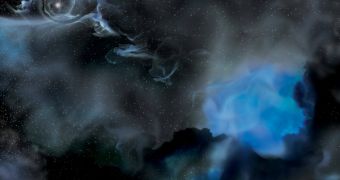According to the latest findings, though black holes attract everything to their core, including light and radiation, they have an upper limit as far as their maximum mass goes. Yale astronomy and physics professor Priyamvada Natarajan believes that the largest black hole can't be more than 10 billion times the mass of our Sun.
Super massive black holes can regularly be found among huge clusters of galaxies, which tend to revolve around them and feed them with matter. Apparently, even the largest black holes in the Universe seem unable to accumulate infinite mass. Theories point to the fact that, at a certain point, their sucking power becomes so great that it even engulfs its own composition, virtually halting the growth to a standstill. Until now, scientists believed that galaxies and black holes evolved together, given the fact that at the center of each galaxy there is a black hole, forcing the circular motion on all solar systems in the vicinity. This gives galaxies their spiral-like look.
According to these recent discoveries, it's possible that the galaxies stop spinning once the “motor” in their core is gone. However, astronomers are yet far from answering such questions, as they still are amazed by the important role black holes actually play in the making of our Universe. It was not until recently that these giants of the skies were paid their due respect - before that, they were thought to be isolated phenomena, unusual occurrences in the sky.
The engine of our galaxy, the Milky Way, is a super massive black hole about 3 million times the mass of our Sun. Yet, it is several billion times smaller than ultra massive black holes inhabiting the outer reaches of space. However, regardless the size, none of them can escape their “destiny,” which is never to exceed about 10 billion times the mass of our Sun. Astronomers seem convinced that black holes shut themselves down like this at any given moment in the history of the Universe, and that this is just a part of the natural interactions between galaxies, clusters and holes.

 14 DAY TRIAL //
14 DAY TRIAL //